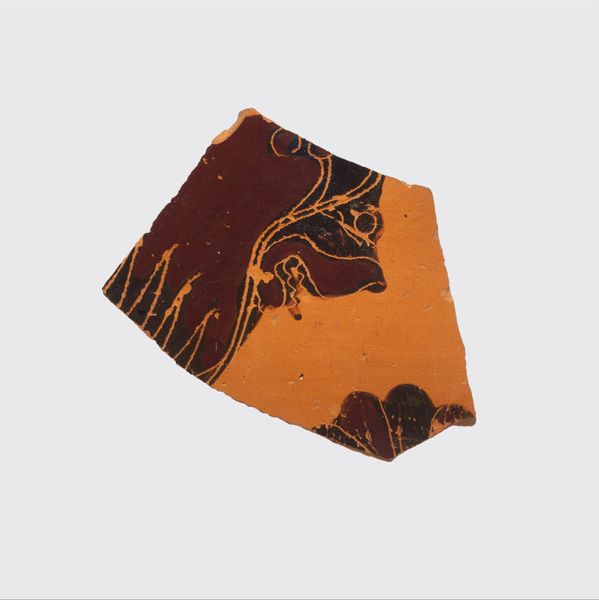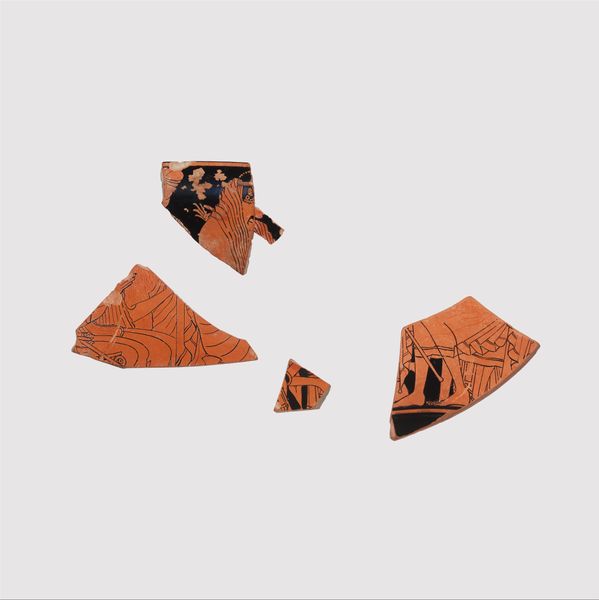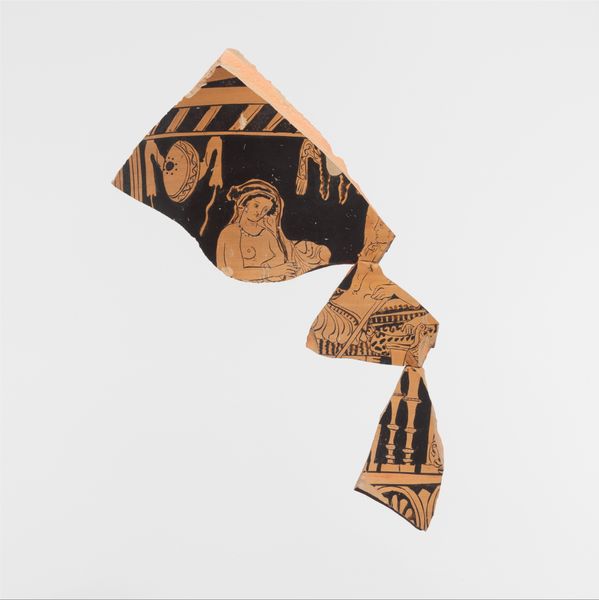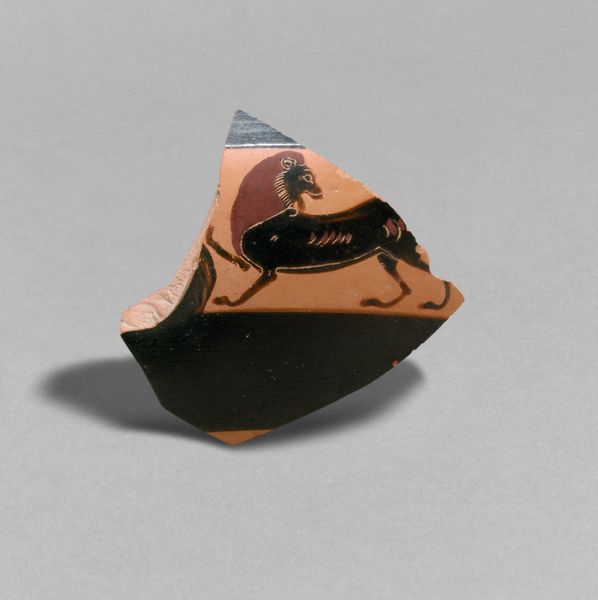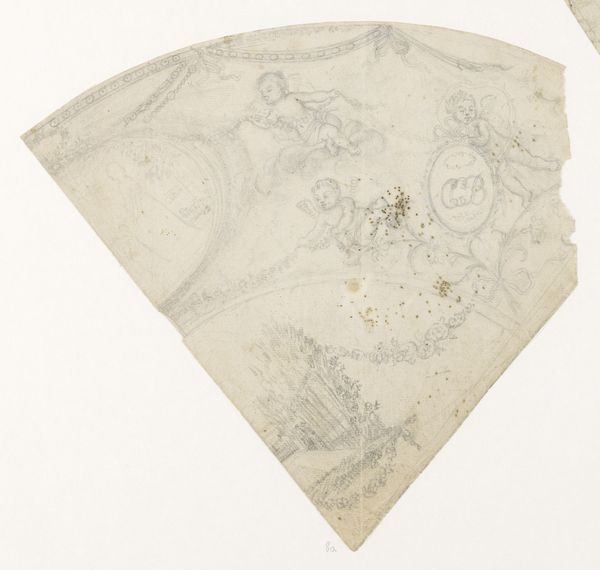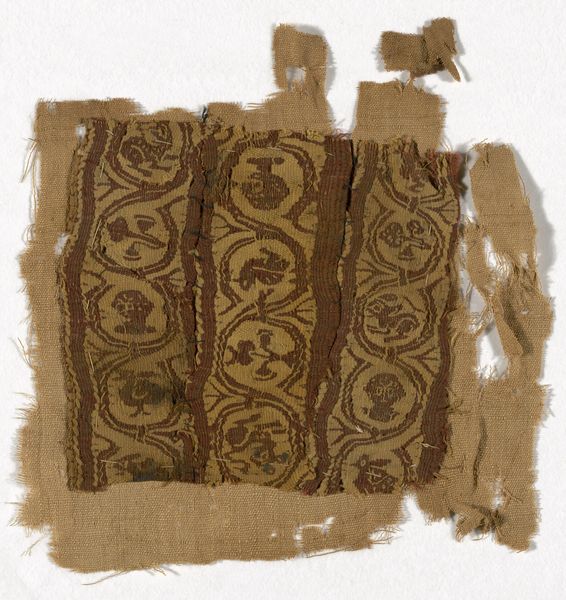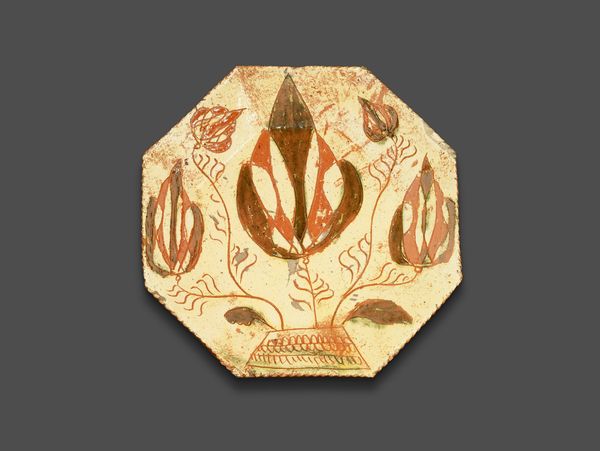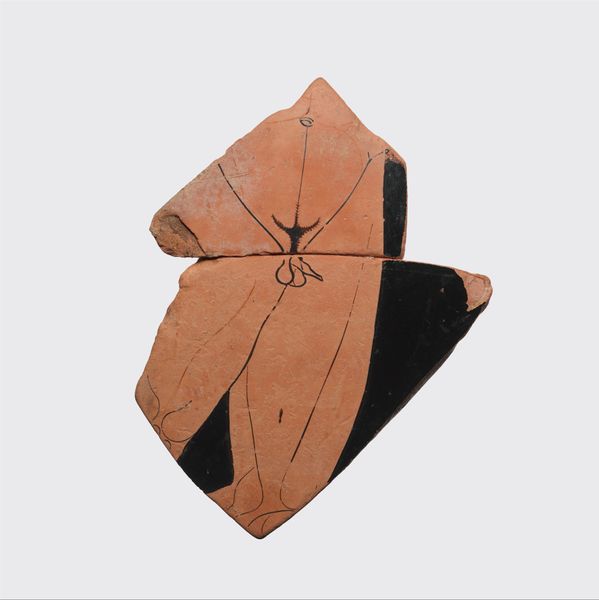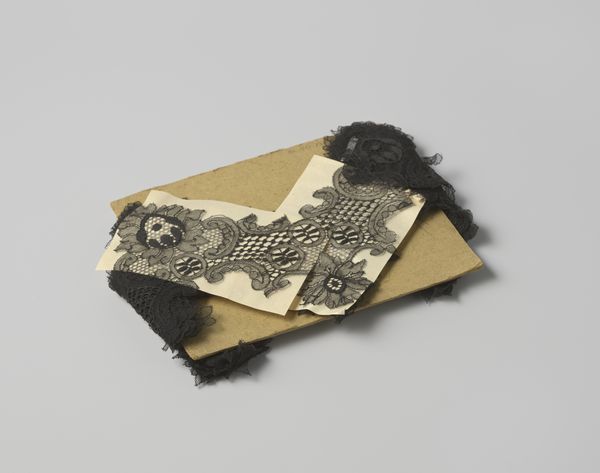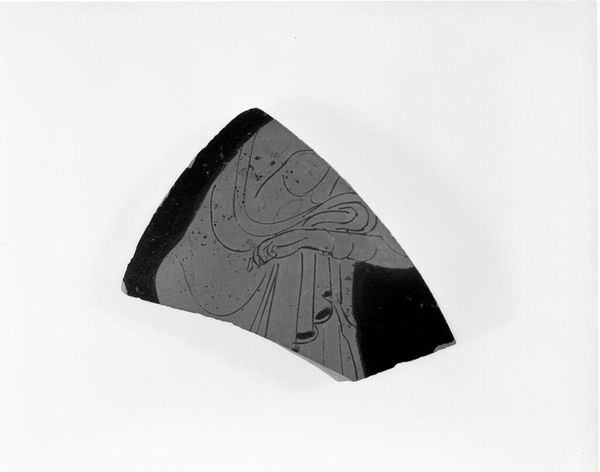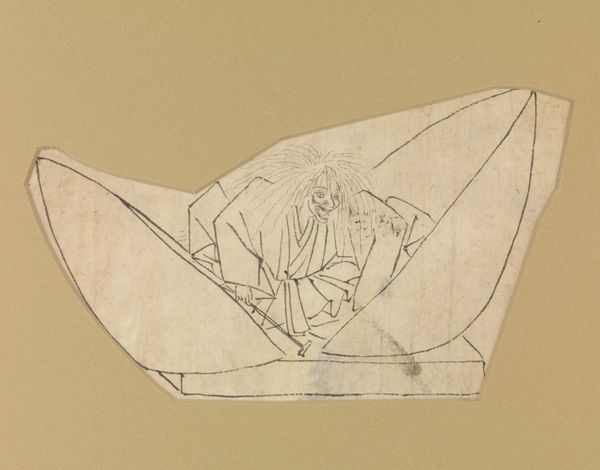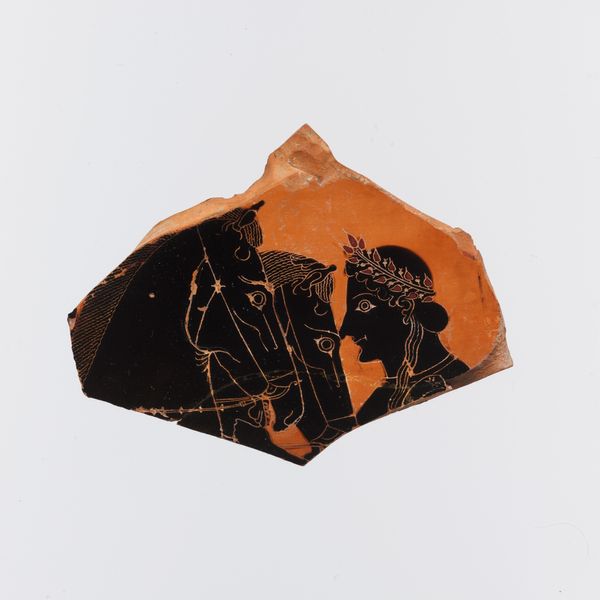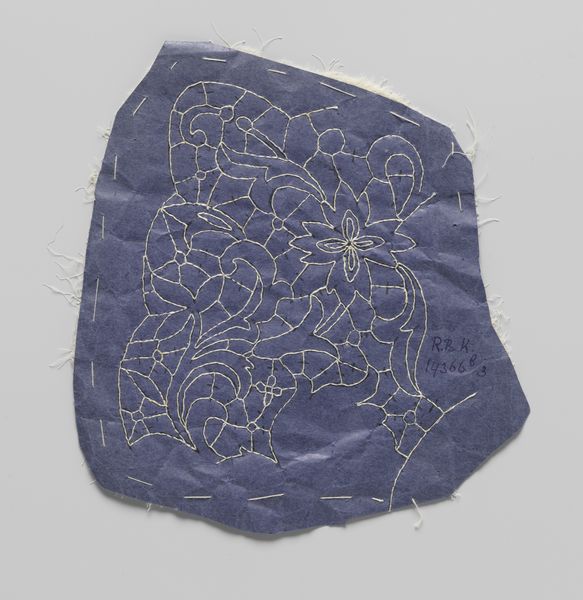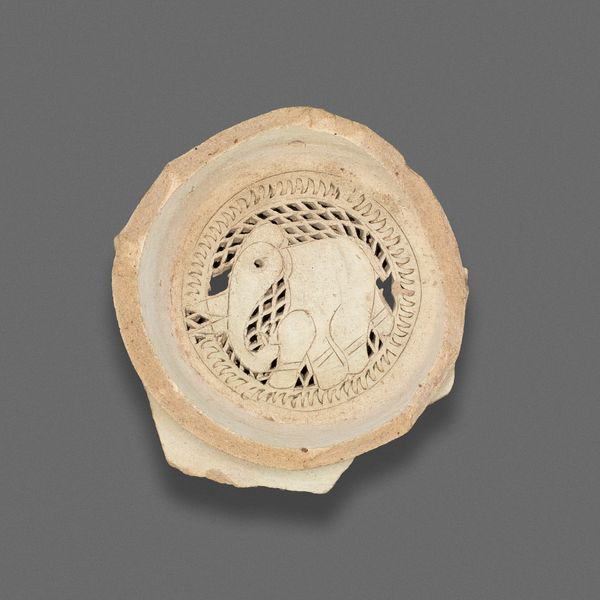
painting, ceramic, terracotta
#
portrait
#
narrative-art
#
pottery
#
painting
#
greek-and-roman-art
#
ceramic
#
figuration
#
roman-art
#
ancient-mediterranean
#
ceramic
#
terracotta
#
miniature
Dimensions: 3 3/8in. (8.5cm)
Copyright: Public Domain
Curator: This terracotta fragment, dating back to approximately 540 BC, is currently held at the Metropolitan Museum of Art. It's identified as a piece of a terracotta lid, likely once part of a larger vessel or perhaps even a sarcophagus. Editor: Immediately striking is the economy of line—the forms are reduced to their most essential contours, yet convey such elegance and a poised stillness. The red against the warm ceramic base, with delicate incisions, feels surprisingly modern. Curator: This fragment presents a captivating glimpse into the intersection of Greek artistry and mythological symbolism, reflecting a broader dialogue concerning gender, power, and narrative. We see the depiction of what appears to be a sphinx, a hybrid creature that held significant cultural weight in the ancient world. Editor: The sphinx's stylized form intrigues me; its body a study in curvilinear shapes, juxtaposed with the relatively rigid geometric border above. Note the repetitive zig-zag motif, how it creates a sense of order and containment above the mythical beast. Curator: Exactly! The sphinx was often seen as a guardian or a challenger, posing riddles and guarding sacred spaces. Understanding this motif requires a keen awareness of its embedded sociopolitical role—as a symbol it embodied both feminine wiles and immutable power structures. How does that strike you when considering the profile of a human depicted next to it? Editor: That juxtaposition is particularly compelling. The human profile, seemingly female, presents a delicate counterpoint to the potent imagery of the sphinx, softened with flowing tresses. It feels like a study in contrasts—the human, vulnerable and exposed, beside the fierce, inscrutable gaze of the mythical creature. Curator: Absolutely, it allows us to rethink the ways in which females were portrayed and perhaps how this imagery empowered new intersectional social discourses on power and gender, race, and class. It urges us to unpack these visual structures and how they informed ancient beliefs and social relations. Editor: Looking at it through that interpretive lens certainly deepens the work. Thinking about how each formal element – the line, shape, composition– work towards those historical and political readings helps connect us not only to its artistic skill, but to broader cultural concerns. Curator: Precisely. It's through this layering of historical understanding with art theory that these works become richer, speaking not only to artistic achievement, but also echoing the complex interplay of social dynamics. Editor: Indeed, focusing on this one, broken piece forces us to envision the whole while grounding ourselves in its elemental construction.
Comments
No comments
Be the first to comment and join the conversation on the ultimate creative platform.
